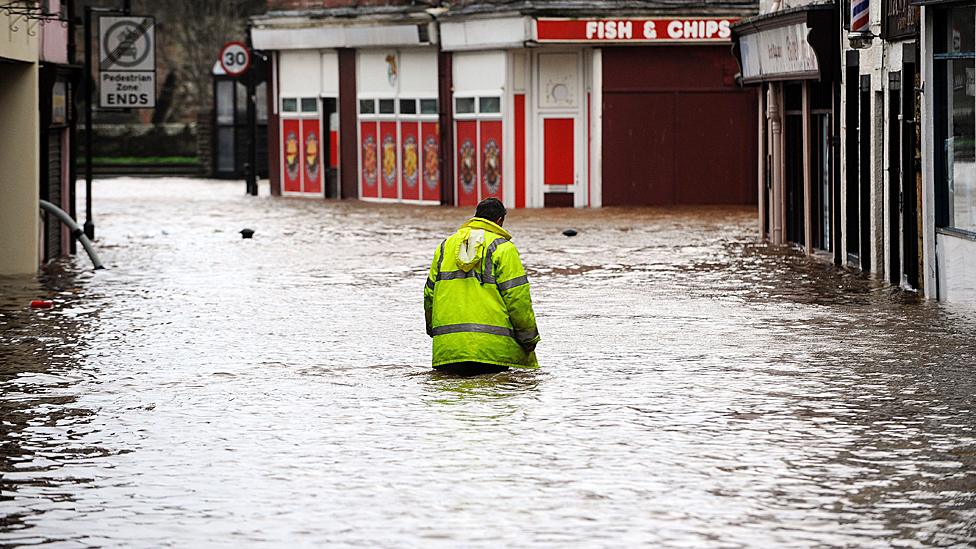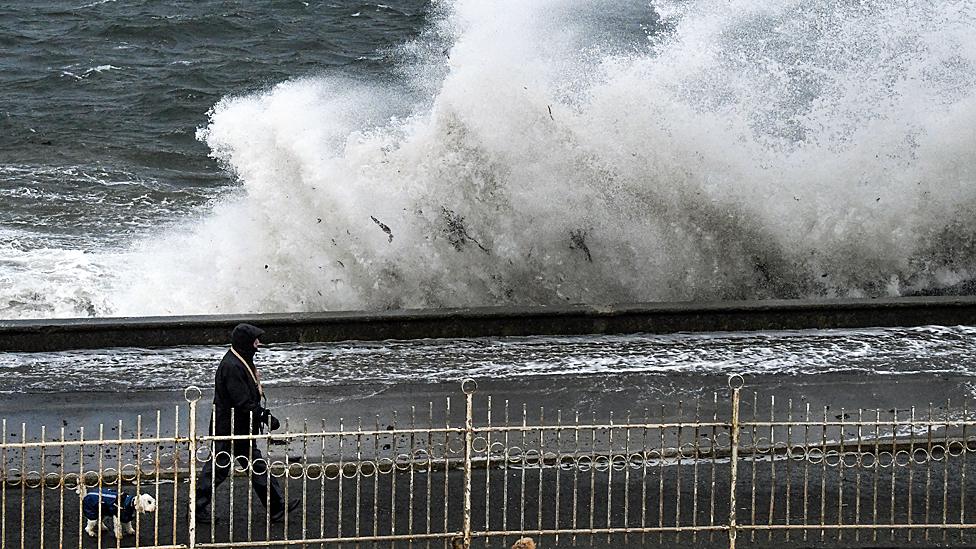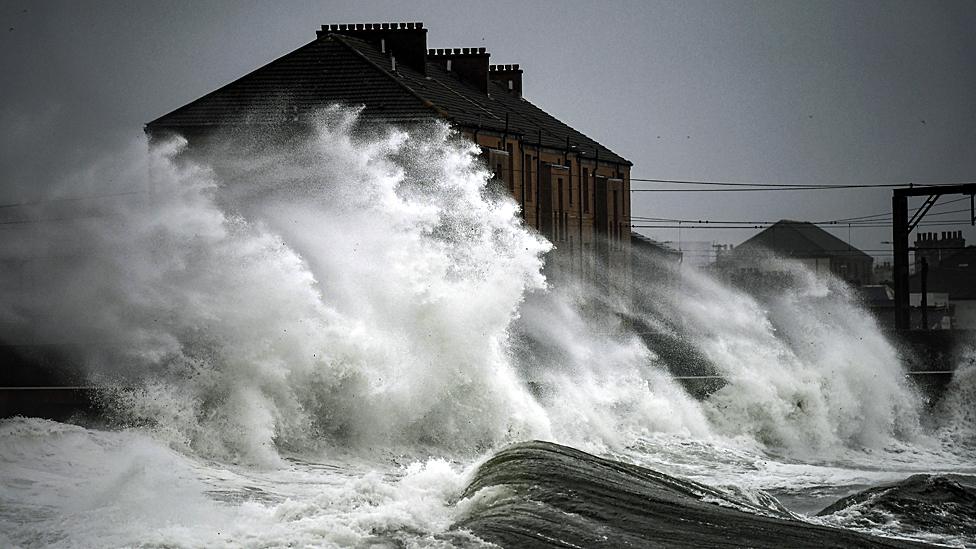Dumfries resilience centre helps extreme weather response
- Published

The centre was set up following severe flooding in southern Scotland
Sitting in a quiet corner of a fine sandstone building feels a long way from the scene of any drama.
Yet here on the Crichton campus in Dumfries they are helping to prepare and recover from extreme weather.
Scotland's National Resilience Centre (NRC) has been based on the site for the past three years.
As we enter the depths of winter and with storm season upon us, what do they do to assist our response and reaction when the worst weather strikes?
How did it get here?

A base on the Crichton campus in Dumfries has been set up for the core team
Plans for the centre first surfaced more than five years ago in the wake of severe flooding - particularly in southern Scotland.
One family had to be rescued by helicopter after their farm house beside the River Nith near Closeburn was cut off by rising water.
Paul Wheelhouse, environment minister at the time, said recent experience made Dumfries and Galloway the ideal choice for the service.
"It is about making sure we are working in a joined-up way and a multi-agency way," he said.
However, it would be nearly two years before the centre - hosted by the University of Glasgow - was officially opened.
Its goal? Focusing on natural hazards and how Scotland can cope with them better.
Why Dumfries?

Dumfries has a long history of flooding problems
Dumfries and Galloway was chosen as the NCR site for its "well-established resilience arrangements" as well as its "extensive experience" in dealing with "disruptive events".
The close proximity of the Crichton Campus to other facilities, including the Crichton Carbon Centre, also provides "opportunity for collaboration".
Centre manager Ailsa Mackay said it made sense to locate it in southern Scotland.
"It was a bit about the decentralisation of government and bringing it out into the rural community," she explained.
"Dumfries and Galloway is a centre of excellence for response - so it is the ideal place to put it because we do so many responses to natural hazards in our area.
"It is a great thing for the region to have a national centre here."
What does it do?

The NRC aims to help put academic research into practice when dealing with "natural hazard events"
The centre is not, the Scottish government has stressed, a response facility but rather a "knowledge and research hub" led by a steering group of resilience experts.
It aims to "drive innovation and research in emergency planning and increase Scotland's resilience to natural hazards".
"We work in the background - we support practitioners with their current challenges," said Ms Mackay.
"That is the things that happen in real life that they are responding to and supporting communities through extreme weather and natural hazard events.
"When they have got an identified issue, that is where we come in."
They can provide or locate scientific evidence and best practice to the people on the front line.
In addition, the centre can also commission research or offer funding for new projects.
"Practitioners in the main know what their challenges are a lot of the time," said Ms Mackay.
"They know what the solution is but to secure funding and build their businesses cases they need the academic evidence."
Has it made a difference?

Scotland's response to incidents is said to be "second to none"
The Scottish government said the NCR had supported a "range of important work since its inception".
It has included projects to introduce the teaching of community resilience in schools across Scotland, and building community participation in flood risk management.
"No-one else is doing this kind of thing," said Ms Mackay. "I think we have contributed significantly."
With a small core team on the Crichton they have a network of many more members and reach out to a range of other organisations.
In that way they try to put "academic evidence into practice" - with a current focus on recovery.
"Scotland's response to natural hazards is second to none it is absolutely excellent," said the centre manager.
"The Dumfries and Galloway area is absolutely gold standard when it comes to responses. If you are looking for best practice, Dumfries and Galloway is absolutely fantastic."
And the lessons learned here can then be taken across the country in order to help respond and recover from the next disaster a little better than the one before.